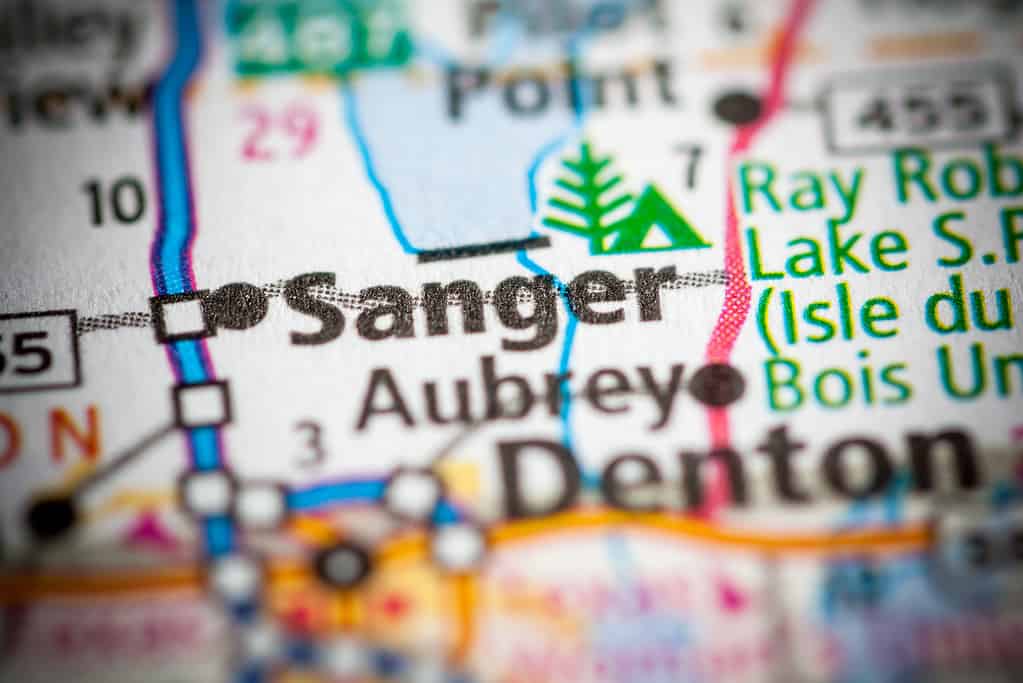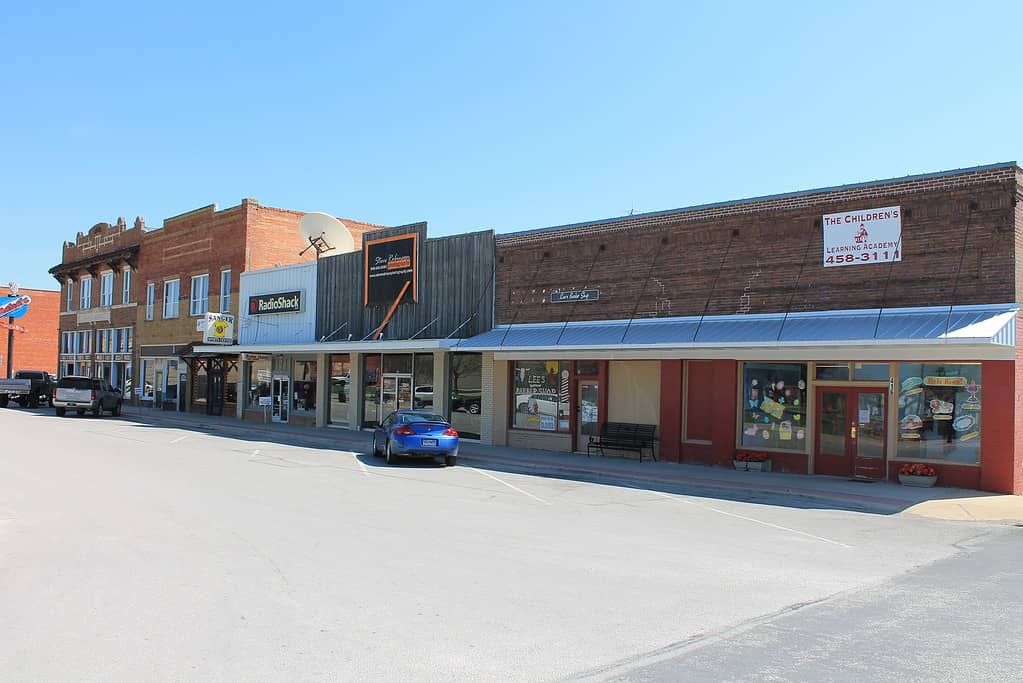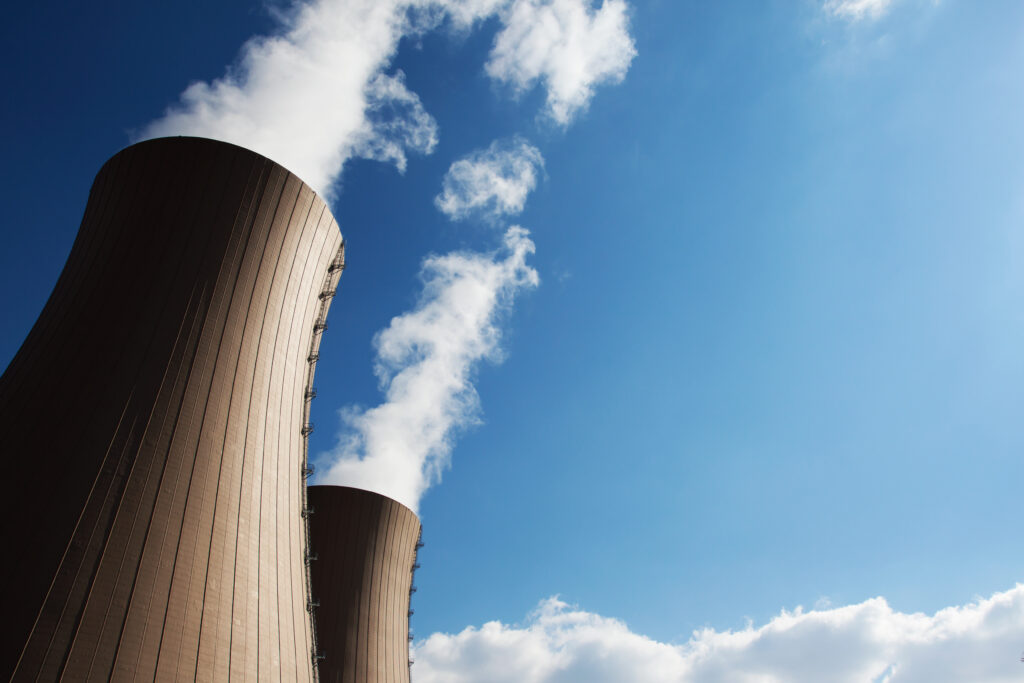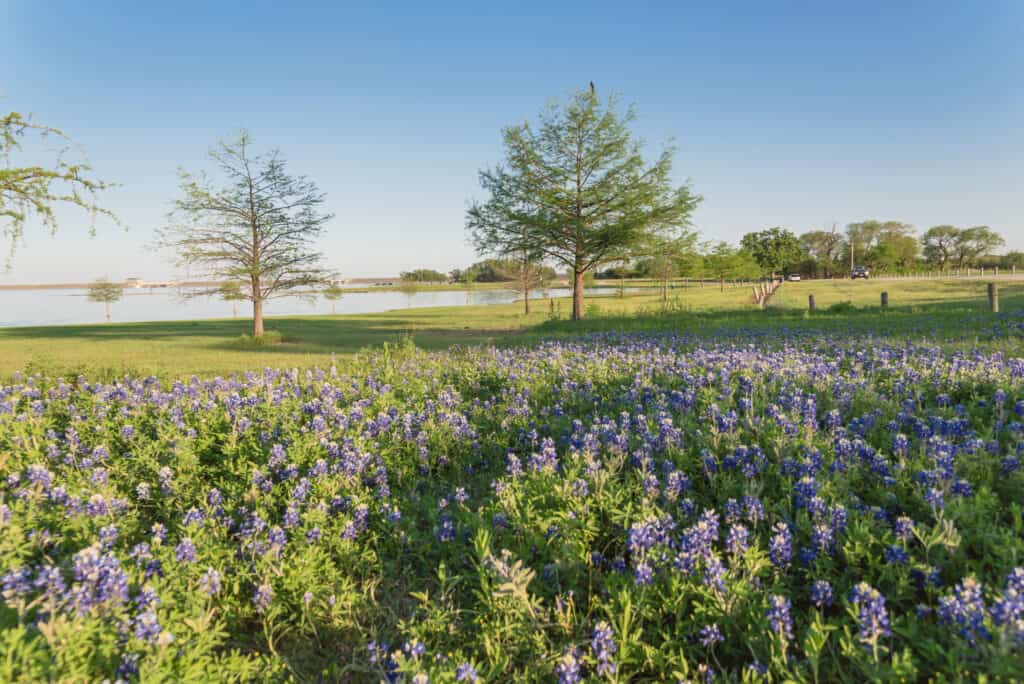Welcome to Texas, where everything is bigger and better, or so they say. But what if I told you that there’s a small town in Texas with air quality so bad that it’s been deemed the worst in the state?
In fact, according to the American Lung Association, it’s one of the most polluted cities in the entire United States. But how did this happen? And what are the consequences?
In this article, we discover the town with the worst air quality in Texas. We delve into the factors that have contributed to its air quality crisis, explore the consequences of living in such a polluted environment, and discuss what can be done to clear the air—both figuratively and literally.
So, take a deep breath (if you can) and join us as we uncover the story of the town with the worst air quality in Texas.

The AQI is a vital tool that helps us gauge the air quality in our surroundings.
©DG-Studio/Shutterstock.com
The Texas Town With the State’s Worst Air Quality
Welcome to Sanger, Texas—a small town with a big problem. Nestled in the heart of the Lone Star State, Sanger boasts a rich history and diverse cultural heritage. But there’s a cloud hanging over this charming community—literally.
Sanger holds the unfortunate title of having the worst air quality in Texas, with an Air Quality Index of 52.3.
Air Quality Index (AQI) Score Range and Interpretation
Imagine a world where we could easily understand the quality of the air we breathe with just a glance at a simple scale. That’s precisely what the Air Quality Index (AQI) does! Let’s dive into the AQI, its score ranges, and what they mean for the residents of Sanger.
Overview of AQI Scoring System
The AQI is a vital tool that helps us gauge the air quality in our surroundings. By transforming complex air pollution data into an easy-to-understand scale, the AQI informs us about potential health risks and guides us in making informed decisions about outdoor activities.
Using data collected from air monitoring stations, the AQI calculates pollutant concentrations and assigns a score based on their potential effect on human health.
AQI Score Ranges and Associated Health Risks
Air Quality Index (AQI) scores play a crucial role in helping us understand the impact of air pollution on our health. These scores, which range from 0 to 500, provide a snapshot of the air quality in a given area and indicate the potential health risks associated with different levels of pollution. Let’s explore the various AQI score ranges and their associated health risks, empowering you to make informed decisions about your outdoor activities and take necessary precautions to protect your well-being.
- Good (0-50): With the AQI in this range, the air quality is excellent, posing little to no health risks. It’s the perfect time for outdoor activities!
- Moderate (51-100): The air quality is still acceptable at this level. However, sensitive individuals, like those with asthma or other respiratory conditions, should take precautions during prolonged outdoor exposure.
- Unhealthy for Sensitive Groups (101-150): Now, the air quality starts to impact sensitive groups. People with respiratory or heart issues, children, and the elderly should limit their outdoor activities.
- Unhealthy (151-200): The air quality has become unhealthy for everyone. It’s a good idea to limit outdoor exertion and stay indoors if possible.
- Very Unhealthy (201-300): At this level, even healthy individuals may experience severe health effects. Everyone should avoid outdoor activities and stay indoors.
- Hazardous (301-500): This is the most dangerous level of air pollution, with severe health risks for everyone. Stay indoors and limit physical activity.
Sanger’s AQI Scores and Trends
Sanger’s air quality has fluctuated over the years, with some periods of improvement and others marked by heightened pollution. With an AQI score of 52.3, the town’s air quality is considered moderate. Therefore, residents must stay informed about current AQI levels and take appropriate precautions.
History of Sanger

Back in 1886, Sanger came to life as a stop along the Santa Fe Railroad.
©SevenMaps/Shutterstock.com
Picture this small Texas town founded in the late 19th century, growing and evolving through the years. Sanger has seen it all, from the early days of railroad expansion to its present-day role in the regional economy. Let’s explore Sanger’s past, shedding light on its economic and demographic changes.
Founding and Early Development
Back in 1886, Sanger came to life as a stop along the Santa Fe Railroad. Its strategic location attracted settlers, who built their homes, businesses, and dreams around the tracks. As the town’s population grew, so did its significance, shaping the region’s future.
Growth of the Town Over the Years
Sanger’s growth was nothing short of remarkable. From a humble railroad stop, the town expanded to accommodate an increasing number of residents. As a result, new schools, churches, and businesses emerged, turning Sanger into the thriving community we know today.
Economic History
Over the years, Sanger’s economy has been shaped by a combination of industry and agriculture. Cotton farming dominated the early years, while cattle ranching and dairy farming soon followed. Industries, such as manufacturing and logistics, also contributed to Sanger’s economic development.
As the town grew, so did its job market. Residents found work in a variety of sectors, from agriculture to manufacturing. Infrastructure improvements, such as better roads and utilities, allowed for even more growth, attracting new businesses and investment.
Demographic Changes
Sanger’s population has experienced ebbs and flows over the years. Early settlers were drawn by economic opportunities, and subsequent generations have continued to call Sanger home. However, migration patterns have shifted, with new residents arriving from other parts of Texas and beyond.
Sanger’s rich cultural heritage is a testament to its diverse population. As people from different backgrounds and traditions have made the town their home, they’ve brought with their unique customs and perspectives, weaving a colorful tapestry of community life.
Population
Imagine a lively small-town community filled with folks from all walks of life. That’s Sanger for you! But first, let’s dive into the town’s demographics, exploring the socioeconomic factors that make this population tick.

Imagine a lively small-town community filled with folks from all walks of life. That’s Sanger for you!
©4,272 × 2,848 pixels, file size: 4.38 MB, MIME type: image/jpeg – License
Current Population Statistics
According to the 2020 census, Sanger boasts a population of around 8,839, creating a warm and welcoming atmosphere. With a relatively low population density, there’s room for everyone to enjoy the Texas sunshine and wide-open spaces.
Sanger’s age distribution is a delightful mix of young and old. With a median age of around 35 years, the town offers a vibrant blend of youthful energy and experienced wisdom.
Socioeconomic Characteristics
While Sanger’s residents enjoy a relatively stable economy, challenges still exist. The median household income was $67,521 in 2020, with some families experiencing financial hardship. But the community is dedicated to supporting one another in times of need.
Educational Attainment and Workforce Composition
Education plays a pivotal role in Sanger’s community life. The town’s residents boast a range of educational backgrounds, from high school diplomas to advanced degrees. In addition, the workforce is diverse, reflecting the town’s economic history, with jobs in agriculture, manufacturing, and various service sectors.
Health and Well-being
Sanger’s residents have access to a variety of healthcare services in the surrounding region. From local clinics to specialized hospitals, the community can count on the medical support they need to stay healthy and thrive.
Prevalence of Air Quality-Related Health Issues
Sadly, Sanger’s poor air quality poses a significant challenge to the health and well-being of its residents. Issues like asthma, allergies, and other respiratory problems are more common than they should be, prompting a call for action to improve the town’s air quality for future generations.
Factors Contributing to Poor Air Quality in Sanger

While industries provide jobs and support the local economy, their emissions can negatively impact air quality.
©Wlad74/Shutterstock.com
In Sanger, the air we breathe can sometimes be less than ideal, but have you ever wondered what causes this issue? A variety of factors contribute to the town’s air quality challenges, from its geographical location to the industries that power its economy. So let’s uncover the primary contributors to Sanger’s air pollution woes.
Geographical Location
Sanger’s proximity to industrial hubs and urban centers can exacerbate its air pollution problem. In addition, emissions from factories and cities can travel to Sanger through wind currents, adding to the town’s pollution levels.
Weather patterns also play a role in Sanger’s air quality. Factors like wind speed, temperature inversions, and humidity can influence how pollutants disperse, with unfavorable conditions sometimes leading to a buildup of pollution.
Industrial Activities
Several industries operating in and around Sanger contribute to the town’s air pollution. These include manufacturing facilities, power plants, and other heavy industries that emit various pollutants, such as particulate matter, sulfur dioxide, and nitrogen oxides.
While industries provide jobs and support the local economy, their emissions can negatively impact air quality. Therefore, ensuring that these industries adopt cleaner technologies and adhere to environmental regulations is crucial for improving Sanger’s air.
Transportation
Sanger’s network of highways and roads connects the town to the wider region, but it also brings pollution from vehicle emissions. Cars, trucks, and other vehicles release pollutants like volatile organic compounds and nitrogen oxides. These can react in the air, forming ground-level ozone.
As the number of vehicles on Sanger’s roads increases, so does traffic congestion. This can lead to higher emission levels, as idling cars and slow-moving traffic produce more pollution than free-flowing traffic.
Agricultural Practices
Agriculture is an essential part of Sanger’s economy, but some farming practices can contribute to air pollution. For example, the use of pesticides and fertilizers can release chemicals into the air, affecting both human and environmental health.
Dust generated by plowing, harvesting, and other agricultural activities can also impact air quality. As particles become airborne, they can contribute to poor visibility and respiratory issues, particularly during dry and windy conditions.
Animals that Live in Sanger
Picture a diverse tapestry of wildlife coexisting in the heart of Texas. Sanger’s natural beauty is home to an array of creatures, from the tiniest insects to majestic mammals. In this section, we’ll explore the local wildlife and the habitats they call home.

Take a walk through Sanger’s countryside, and you might spot a white-tailed deer, coyote, or even an armadillo!
©Mircea Costina/Shutterstock.com
Overview of Local Wildlife
Take a walk through Sanger’s countryside, and you might spot a white-tailed deer, coyote, or even an armadillo! The skies are filled with birds like the red-tailed hawk and the eastern bluebird, while the ponds and creeks teem with frogs and turtles.
Sanger’s unique location also hosts several rare species, some of which are threatened by human activity. Conservation efforts are underway to protect these vulnerable creatures, ensuring they remain a part of Sanger’s natural heritage.
Habitats and Ecosystems
Sanger’s diverse landscapes offer an array of habitats for its wildlife. Dense forests provide shelter for deer and squirrels, while wetlands are a haven for wading birds and amphibians. Rolling grasslands are perfect for grazing mammals and ground-nesting birds.
As Sanger’s population and industry have grown, so too have the pressures on its natural habitats. Development, pollution, and poor air quality have taken a toll on the local flora and fauna, prompting a call for action to preserve and restore these vital ecosystems.
Wildlife Conservation Efforts
Sanger’s community recognizes the importance of protecting its wildlife and habitats. As a result, local and regional initiatives are underway, aiming to safeguard the town’s natural treasures for generations to come.
From volunteer-led habitat restoration projects to citizen science programs, Sanger’s residents are actively engaged in wildlife conservation.
Flora
Imagine a lush, green landscape dotted with a myriad of plant species that paint a picture of natural harmony. Sanger’s flora is as diverse as its fauna, with native species playing a vital role in the local ecosystems. Let’s delve into the world of Sanger’s plant life and the efforts to protect it.

Species like the Texas bluebonnet and the
eastern redbud
not only beautify the landscape but also contribute to the health of the environment.
©Trong Nguyen/Shutterstock.com
Overview of Local Flora
From towering oak trees to vibrant wildflowers, Sanger’s native plants provide food, shelter, and other resources for local wildlife. Species like the Texas bluebonnet and the eastern redbud not only beautify the landscape but also contribute to the health of the environment.
But not all plants in Sanger are beneficial. Invasive and non-native species can outcompete native plants, disrupting the delicate balance of the local ecosystems. As a result, efforts are underway to manage and control these unwelcome invaders.
Habitats and Ecosystems
Sanger’s plants find their homes in a variety of habitats, from dense forests and tranquil wetlands to expansive grasslands. Each ecosystem has its unique plant community, which contributes to its overall health and biodiversity.
As with the local wildlife, Sanger’s plant life faces challenges due to human activity. Development, pollution, and poor air quality can harm plant diversity and overall ecosystem health, underscoring the need for conservation and restoration efforts.
Plant Conservation and Restoration Efforts
Sanger’s community is committed to preserving its rich botanical heritage. Local and regional projects focus on protecting native plants and restoring damaged ecosystems, ensuring a vibrant and healthy environment for all.
The people of Sanger are actively involved in plant conservation, participating in initiatives like tree planting and habitat restoration. Through their hard work and dedication, Sanger’s residents are helping to create a greener, healthier future for their town.
Impact of Poor Air Quality on Wildlife
Imagine a world where the air we breathe affects not only our health but also the well-being of the animals we share our planet with. In Sanger, poor air quality takes a toll on the local wildlife, disrupting delicate ecosystems and endangering vulnerable species. Let’s explore the far-reaching consequences of pollution on Sanger’s rich and diverse animal life.

In Sanger, poor air quality takes a toll on the local wildlife, disrupting delicate ecosystems and endangering vulnerable species.
©Boyloso/Shutterstock.com
Direct Health Effects on Animals
Just like us, animals suffer when the air they breathe is polluted. Respiratory issues can weaken their overall health, making it harder for them to find food, reproduce, and escape predators. The constant exposure to pollutants also puts immense physiological stress on their bodies, affecting their long-term survival.
As if struggling to breathe wasn’t bad enough, poor air quality can also make animals more susceptible to diseases. In addition, weakened immune systems leave them vulnerable to infections and parasites, which can spread rapidly through affected populations.
Indirect Effects on Ecosystems and Food Chains
Polluted air doesn’t just harm animals directly—it also wreaks havoc on their habitats. Changes in plant life can lead to a reduction in food sources, forcing animals to compete for what little remains or move to other areas in search of sustenance.
When pollution affects one species, it can create a domino effect throughout the ecosystem. For example, imbalances in predator-prey relationships can arise, leading to declines in certain animal populations and an overabundance of others.
Long-term Consequences for Biodiversity and Species Survival
Over time, the harmful effects of poor air quality can lead to dwindling animal populations. As numbers shrink, so does the genetic diversity of the species, putting them at greater risk of extinction.
Sanger’s endangered and sensitive species are particularly at risk from pollution. The loss of even a few individuals can spell disaster for these fragile populations, making it all the more important for us to take action and protect the air they breathe.
Key Takeaways
As we reach the end of our journey through Sanger, it’s clear that the town’s air quality crisis is a complex and multi-faceted issue. From its history and population to its impact on local wildlife and plants, the consequences of poor air quality reach far and wide. But there’s hope on the horizon.
The community of Sanger has shown resilience and determination in its fight for cleaner air. With grassroots initiatives, innovative solutions, and the support of policymakers, the future can be brighter—and cleaner—for this Texas town.
Where is Sanger, Texas Located on a Map?
Sanger is a city located in Denton County, Texas, and it is thriving despite its poor air quality! With a population of 6,916 according to the 2010 census, the city has witnessed significant growth. reaching 8,839 residents as per the 2020 census.
Here is Sanger, Texas on a map:
The photo featured at the top of this post is © Trong Nguyen/Shutterstock.com
Thank you for reading! Have some feedback for us? Contact the AZ Animals editorial team.






